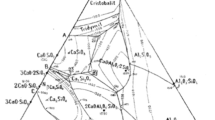Abstract
The objectives and activities of the International Energy Agency-Annex 18 are summarized. One of the goals of the Annex was to determine the formulations that best represent the thermodynamic properties of HFC-134a and HCFC-123. The formulations selected were those which accurately represented the experimental data and simultaneously exhibited thermodynamic consistency. Methods of comparison include analysis of the experimental data, statistical comparisons of values calculated from the property formulations to experimental values, and graphical analyses of the thermodynamic surface. The analytical methods used are summarized in this paper. The equations of state reviewed in these comparisons represented the most accurate formulations available in December 1992. Four equations of state were reviewed for HFC-I34a and three equations of state were considered for HCFC-123. These equations represented the work of independent researchers in Germany, Japan, and the United States. The formulations selected as international standards are presented.
Similar content being viewed by others
References
M. O. McLinden, W. M. Haynes J. T. R. Watson. and K. Watanabe,National Institute of Standards and Technology, NISTIR 3969 (1991 ).
R. Tillner-Roth and H. D. Baehr.J. Phys. Chem. Ref. Data 23(5):657 (1994).
B. A. Younglove and M. O. McLinden.J. Phys. Chem. Ref. Data 23(5):731 (1994).
C.-C. Piao, M. Noguchi. H. Sato, and K. Watanabe. personal communication (1992).
M. L. Huber and M. O. McLinden,Proceedings International Refrigeration Conference (Perdue University. 1992).
M. L. Huber and J. F. Ely,Int. J. Refrig. 15(6):393 (1992).
C.-C. Piao, H. Sato, and K. Watanabe.Fluid Phase Equil. 80:57 (1992).
Japanese Association of Refrigeration.Thermophysical Properties of Environmentally Acceptable Fluorocarbons-HFC-134a and HCFC-123 (1990).
S. G. Penoncello, R. T. Jacobsen, R. C. Williams, and E. W. Lemmon,Equation al State Comparisons for HFC-134a and HCFC-123 (University of Idaho, Moscow. 1993).
A. E. Elhassan. R. J. B. Craven. and K. M. de Reuck.Comparisons of Equations of State with Experimental Data for R134a and R123, IUPAC Thermodynainic Tables Project Centre, London, England (1993).
A. R. H. Goodwin, D. R. Defibaugh G. Morrison, and L. A. Weber.Int. J. Thermophys. 13:9 (1992).
Author information
Authors and Affiliations
Rights and permissions
About this article
Cite this article
Penoncello, S.G., Jacobsen, R.T., de Reuck, K.M. et al. The selection of international standards for the thermodynamic properties of HFC-134a and HCFC-123. Int J Thermophys 16, 781–790 (1995). https://doi.org/10.1007/BF01438863
Issue Date:
DOI: https://doi.org/10.1007/BF01438863



